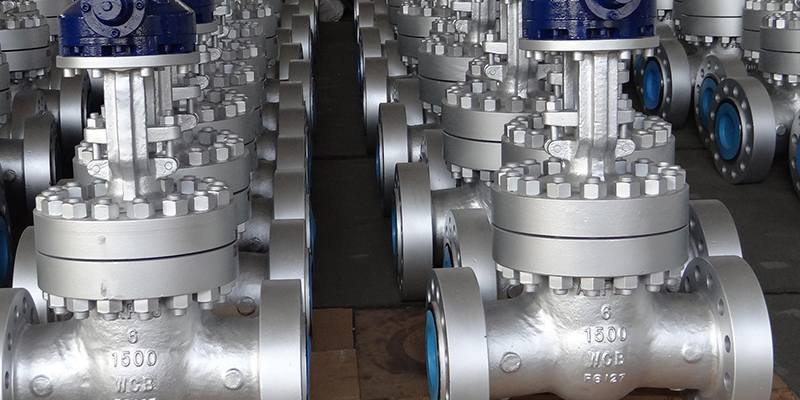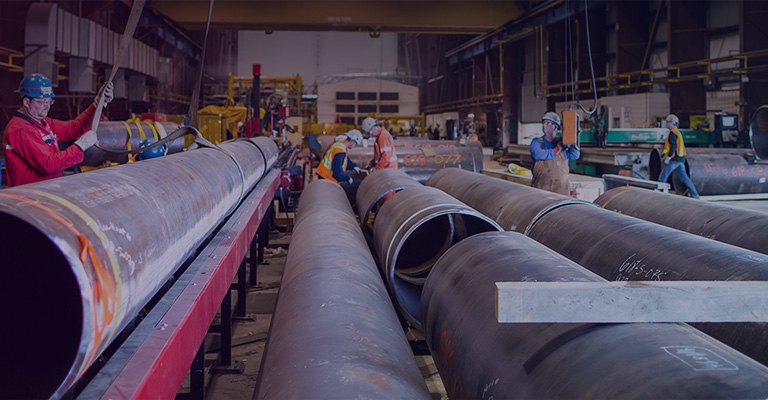Seamless steel pipes are the pipes with the largest amount and the most varieties and specifications in industrial pipes.
Basically divided into:
There are two types of seamless steel pipes for fluid transportation and special seamless steel pipes. The former is a steel pipe commonly used in process pipes, and the latter is a steel pipe for boilers, cracking furnace tubes, and heat exchangers.
According to the material can be divided into:
Carbon seamless steel pipe, chromium molybdenum seamless steel pipe and stainless steel, acid-resistant seamless steel pipe.
According to the nominal pressure can be divided into:
Low pressure (0≤1.0MPa), medium pressure (1.0<10MPa=, high pressure (≥10MPa) three types.

Process pipelines are commonly used seamless steel pipes for fluid transportation
Classification:
❶
Seamless carbon steel pipe
Commonly used manufacturing materials are No. 10, No. 20, and 16Mn steel.
Its specification range is: hot-rolled outer diameter φ32-630mm, cold-drawn outer diameter φ6-200mm, single tube length 4-12m, allowable operating temperature is -40-450°C.
It is widely used to transport various media that are not corrosive to steel, such as transporting steam, oxygen, compressed air, oil and oil gas, etc.
❷
Low alloy steel seamless pipe
Refers to alloy steel pipes containing a certain proportion of alloying elements.
Usually divided into two types:
One is low-alloy steel pipe containing manganese, called ordinary low-alloy steel pipe, such as 16Mn, 15MnV, etc.; the other is low-alloy steel pipe containing chromium, molybdenum and other elements, called chrome-molybdenum steel pipe.
Commonly used are 12CrMo, 15CrMo, 12Cr2Mo, 1Cr5Mo, etc. The specification range is φ10~φ273mm in outer diameter, and the length of a single tube is 4~12m. The applicable temperature range of chrome-molybdenum steel pipe is -40~550℃.
Low-alloy seamless steel pipes are mostly used to transport various high-temperature oil products, oil and gas, less corrosive brine, low-concentration organic acids, etc.
❸
Stainless and acid-resistant seamless steel pipe
According to the different contents of chromium, nickel and titanium, there are many varieties, such as Cr13, 00Cr17Ni14Mo2, 1Cr18Ni12Mo2Ti, 1Cr18Ni9Ti and so on.
The most used of these steel grades is 1Cr18Ni9Ti, which is often represented by the simplified material code 18-8 on the construction drawings, and the applicable temperature range is -196~700℃.
In chemical production, it is used to transport various highly corrosive media, such as nitric acid, acetic acid and urea.
❹
High pressure seamless steel pipe
Its manufacturing material is basically the same as the above seamless steel pipe, except that the pipe wall is thicker than the medium and low pressure seamless steel pipe, and the thickest pipe wall reaches 40mm.
For example, the specifications of high-pressure seamless steel pipes for fertilizer equipment are φ14×4(mm)~273×40(mm), the length of a single pipe is 4~12m, the applicable pressure range is 10~32MPa, and the working temperature is -40~400℃.
The above high-pressure seamless steel pipes are used in petrochemical plants to transport raw material gas, hydrogen and nitrogen, synthesis gas, water vapor, high-pressure condensed water and other media.
❺
Cryogenic steel pipe
In the cold area of imported engineering projects, the amount is more, the material grades are STPL-39, STPL-46, and the working temperature can reach -105°C.
Low-temperature steel pipes are divided into seamless steel pipes and seamed steel pipes. The nominal diameter of seamless low-temperature steel pipes is 15-400mm, and the wall thickness is the same as that of carbon steel pipes; The standard length of root canal is 6m.
It is suitable for transporting various non-corrosive low-temperature medium pipelines.












 Eastern Steel Manufacturing Co.,Ltd not only improve product production and sales services, but also provide additional value-added services. As long as you need, we can complete your specific needs together.
Eastern Steel Manufacturing Co.,Ltd not only improve product production and sales services, but also provide additional value-added services. As long as you need, we can complete your specific needs together.










